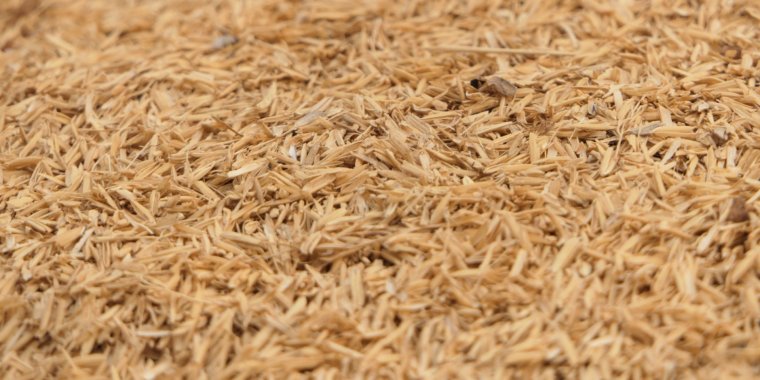| News / Science News |
Rice bran oil ‘a green solution for industry’
Rice bran oil can potentially replace the petroleum-based oils currently used for cooling and lubricating lathes and other cutting machinery, says a study.

Rice bran oil ‘a green solution for industry’. Photo: Utsman Media/Unsplash
Sneha Edla, lead author of the study, and researcher at the Advanced Tribology Research Centre, College of Engineering Trivandrum, Kerala, India, says that regular exposure to mineral oil-based cutting fluids, which have toxic additives, has been linked to cancer.
“Rice bran oil, a potential base oil for bio-lubricant formulation, uses food-grade emulsifiers along with bio-additives,” says Edla. “It is found that addition of herbal oils as additives improves oxidative stability, corrosive stability, emulsion stability, and the tribological [science of interactive surfaces in motion] properties of the ‘green’ cutting fluid as compared to commercially available cutting fluid,” she tells.
The researchers say that performance tests on a lathe machine used for turning showed that green cutting fluid formulated from rice bran oil was comparable to that of commercial cutting fluid. Rice bran oil, extracted from the hard, brown covering layer of rice called chaff or rice husk, is popular as a cooking oil in many Asian countries.
Mineral cutting oils, often a by-product of refining crude oil, can lead to skin disorders (such as skin irritations, oil acne and rashes); eye, nose, and throat irritation; or respiratory symptoms (such as cough, asthma, and other breathing issues).
Safe disposal of cutting oil is problematic since it is insoluble and can cause soil contamination.
According to the researchers, earlier studies carried out on various vegetable oils extracted from rapeseed, oil palm, shea butter, coconut, neem, sunflower, avocado, pongamia, cottonseed, sesame, jatropha and groundnut were not as successful.
They were surpassed in performance as a green cutting fluid by rice bran oil formulated with holy basil oil and clove oil as bio-additives.
Ananthan Thampi, co-author of the study, says many vegetable oils suffer from disadvantages like poor oxidative stability and low-temperature behaviour, although these may be improved by chemical modifications or by blending with additives.
“In this research work, using rice bran oil, we rectified almost all disadvantages. The evaluated properties of the formulated green cutting fluid are noted to be almost the same as that of commercial cutting fluid, and at higher temperatures, the thermal stability of modified rice bran oil was found to be better than commercial oil,” he says.
India is among the world’s largest producers of rice bran oil, accounting for most of the total global production, and is followed by China and Japan.
K. Prabhakaran Nair, an expert in bio-lubricants and former director of the National Institute of Technology Calicut, Kozhikode, says: “Rice bran oil possesses comparatively better oxidation stability because of the presence of natural anti-oxidants like gamma oryzanol, tocopherols and tocotrienols. Also, it has a balanced unsaturated and saturated fatty acids composition which helps in formulating a better bio-lubricant.”
“India produces about one million tonnes of rice bran oil annually but it can go up to 1.6 million tonnes if all the rice bran available in India is efficiently used to extract oil,” says Nair.
He also emphasises that the essential oils used as additives act as anti-oxidants, biocides and anti-corrosive agents without significantly increasing the final product because only small quantities are needed. (SciDev.Net)
YOU MAY ALSO LIKE





